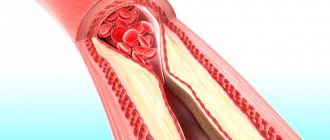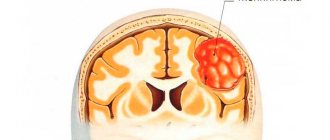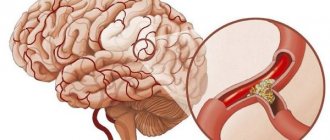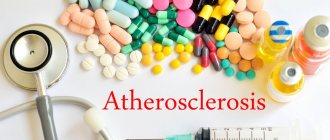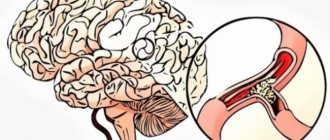How does atherosclerosis develop?
Smoking is one of the main reasons for the development of atherosclerosis.
Atherosclerosis can develop in various vessels - heart, brain, limbs, aorta.
Atherosclerosis of the heart vessels is a lesion of the coronary arteries that disrupts hemodynamics, blood and oxygen supply to the myocardium, causing cardiosclerosis. Subsequently, the heart rhythm is disturbed, and insufficient blood supply to the body develops. Atherosclerosis of the coronary vessels is the main cause of the development of coronary heart disease, and in case of complications - myocardial infarction.
There are a number of factors that accelerate the occurrence of atherosclerosis of the heart vessels:
- Hereditary cardiac and endocrine pathologies
- Obesity, excess cholesterol (animal fats) in the diet
- Significant psychological and physical stress, stress
- Smoking
Atherosclerosis of the heart vessels affects not only the coronary arteries, but also the aorta. Pathology of the aorta can be asymptomatic, but in most cases painful attacks occur in the chest or abdomen (pressing, burning pain), shortness of breath, increased blood pressure, dizziness, and angina.
Symptoms
Atherosclerosis of the coronary arteries leads to constant oxygen starvation of the heart muscle.
So, the main manifestations of atherosclerosis of the heart vessels are angina pectoris and ischemic disease, which can be complicated by myocardial infarction and cardiosclerosis.
Symptoms of a heart attack are similar to an attack of angina, but longer lasting, with severe pain and shortness of breath, which does not stop under the influence of nitroglycerin. With a heart attack, heart failure develops very quickly, so urgent hospitalization is required.
With cardiosclerosis, heart failure also occurs, but this occurs gradually and is accompanied by severe shortness of breath, swelling, and loss of consciousness.
Causes of clogged heart vessels
With age, the walls of blood vessels become less elastic, subject to various types of deformation, and become denser - all this creates an environment favorable for cholesterol deposits. The concentration of fat and toxins in the arteries leads to thickening of the walls and blockage of the blood, which reduces the supply of nutrients to the organs.
The main reasons for the accumulation of fatty and toxic deposits in the body:
- various blood infections (sepsis), which can cause narrowing of the walls of blood vessels;
- thrombus formation as a result of varicose veins and various skin diseases;
- permanent, sudden changes in pressure in the vessels, due to professional activities (for example, among divers), due to which air bubbles appear in the vessels, interfering with normal blood flow;
- blood vessels and their walls are clogged with cholesterol due to increased levels of dangerous cholesterol;
- helminthic infestation can cause blockage of coronary vessels, since the remains of parasites and their larvae travel throughout the body through veins and arteries.
Difficulties in the passage of blood through clogged vessels can lead to the development of angina, heart attack, coronary artery disease, and arrhythmia.
The human circulatory system is complex: all the nutrients for the body, hormones, minerals, etc. move through veins and arteries. Maintaining normal blood circulation is very important for overall health, well-being, mobility and ability to work.
Read on topic: Recipes for cleaning blood vessels using folk remedies
Cholesterol deposits
Cholesterol plaques on the walls of blood vessels can attract calcium deposits, which in turn increase the size of the formation inside the vessel and can lead to complete blockage of the blood vessels. In turn, this phenomenon leads to expansion of the heart vessels, causing the walls to crack.
The appearance of damage in the tissues of blood vessels forces the body to produce blood clots that seal cracks in the walls - this process provokes the formation of thrombosis. These negative phenomena are provoked by poor nutrition: eating high-calorie foods, baked goods, fatty meats, and carbonated drinks.
Thrombosis
Thrombosis and the presence of blood clots inside vessels can appear as a result of varicose veins, thrombophlebitis, disintegration of atherosclerotic plaques, arrhythmia, and various pathologies of the heart muscle.
Parasitic lesions
Hostile microorganisms, parasites, microbes move along with the blood inside the arteries and veins; they can form balls, intertwining with each other.
Diagnostics
The condition of blood vessels can be reliably assessed using the following diagnostic methods:
- Blood analysis.
- Electrocardiography.
- Echocardiography.
- X-ray examination of the chest.
- Magnetic resonance imaging.
- CT scan.
- Stress testing for resistance to physical activity.
- Angiography.
Based on your complaints and symptoms, as well as the capabilities of the medical center, the doctor will select the necessary research methods for you. Ask your doctor how a specific diagnostic procedure is performed and what side effects may occur.
Prevention
Atherosclerosis of the heart vessels is a progressive disease, but by changing your lifestyle you can prevent further development of atherosclerosis. Statistically, the following nine risk factors are responsible for 9 out of 10 heart attacks:
Diet is the basis for the prevention and treatment of atherosclerosis.
- Smoking.
- Obesity.
- Psycho-emotional overload.
- Excessive consumption of alcoholic beverages.
- Diabetes.
- Low physical activity.
- Lack of fruits and vegetables in the diet.
- Increased cholesterol levels.
- Arterial hypertension.
Luckily for us, we are able, to one degree or another, to influence each of these factors. Smoking, and generally consuming nicotine in any form, should be completely abandoned. The problem of excess weight and physical inactivity can be solved by morning exercises and walks. Nowadays, there is an abundance of different fruits and vegetables, it is not difficult to choose the ones you like. By following all the previous recommendations, your stress resistance automatically increases and the need for alcohol decreases, and then your blood pressure returns to normal.
If you have already had a heart attack or are at high risk of having one, you should take blood thinners to protect you from developing a blood clot. Ask your doctor to prescribe you some medicine, most often regular aspirin in very small doses.
Preparations for cleansing blood vessels in the legs
It is immediately worth noting that medications will not help rid the lower extremities of plaques. The walls of the bloodstream consist of three layers. The clot germinates on average, so it is practically not affected by drugs.
Why then do doctors prescribe courses of medications for the treatment of lower extremities?
The fact is that the drugs prevent the formation of new growths and promote the removal of toxins. And this significantly improves the patient’s general condition and prevents the progression of pathology.
Omega-3
In fact, the drug is fish oil, which is present in sufficient quantities in vegetable oils, red pepper and inhabitants of the deep sea. Contains polyunsaturated fatty acids. Available in capsules.
Positive influence:
- Improves blood circulation.
- Reduces cholesterol concentration.
- Prevents the formation of plaques.
How to clean:
- It is recommended to drink 2 pieces 3 times daily.
- Course duration is 3 months.
An excellent preventive remedy that is unlikely to help get rid of an existing problem.
Bile acid sequestrants
Group representatives:
- Cholestyramine;
- Kolesevelam;
- Colestipol;
- Questran;
- Kwantalan.
They are used for additional treatment in the initial stages of atherosclerosis, helping to clean blood vessels.
The action is aimed at reducing cholesterol concentrations by isolating bile acids. However, the drugs are not absorbed into the blood and do not cause side effects.
Self-appointment is unacceptable. A preliminary consultation with a cardiologist is required.
Statins
These drugs for cleaning blood vessels in the legs lower cholesterol and blood viscosity, which eliminates the risk of thrombosis.
In the group of these medications:
- Aspirin;
- Atorvastatin;
- Rosuvastatin;
- Cerivastatin;
- Pitavastatin;
- Lovastatin;
- Simvastatin.
The doctor prescribes the medications based on the diagnostic results. It is forbidden to take during the acute stage of chronic pathologies of the liver and kidneys.
Fibrates
Reduce the concentration of organic acids in the blood plasma. The drugs significantly improve the condition of patients with atherosclerotic changes, tone the vascular walls, including those of the lower extremities, and are recommended for diabetes, heart attack, and stroke.
Common drugs:
- Clofibrate;
- Fenofibrate;
- Gemfibrozil;
- Bezafibrate.
It is forbidden to take pills if you have liver disease.
A nicotinic acid
Used at any stage of atherosclerosis of the lower extremities to prevent thrombosis. Belongs to water-soluble drugs of group B. It is allowed to use it to clean blood vessels only under the supervision of a doctor after diagnosis.
Contraindicated for ulcers, gout and diabetes.
Treatment
If you have atherosclerosis of the heart vessels, you should not delay treatment, because initial atherosclerotic changes can be completely cured.
First of all, the patient should normalize the level of cholesterol in the blood. This is followed by prevention of the progression of atherosclerosis and improvement of blood circulation in the affected tissues and organs. The first and main therapeutic measure is lifestyle correction - normalization of body weight, a diet limiting animal fats, giving up alcohol and tobacco, and proper rest.
Atherosclerosis of the heart vessels is a fairly common disease leading to fatal complications, so prevention of the disease is very important, especially for people over 35 years of age - a healthy lifestyle, body weight control, regular cleansing of the body (using enterosorption, removal of toxins through the gastrointestinal tract).
Drug treatment is also used - drugs to reduce cholesterol, eliminate angina attacks, and normalize blood circulation. In some cases, surgical removal of areas of vessels with severe atherosclerotic lesions is used.
Surgery
Methods of surgical treatment of atherosclerosis of the coronary arteries are aimed at normalizing the blood supply to the heart. Operations are prescribed at the request of the patient or, as recommended by a doctor, in case of severe damage to the heart vessels.
Coronary angioplasty (stenting, ballooning)
This type of treatment restores normal blood flow through the patient’s vessels affected by atherosclerosis.
With the help of a catheter passed through an artery in the groin or arm to the affected vessels, these vessels are dilated to their physiological norm.
Expansion is carried out using a special balloon or by installing a metal mesh (stent).
The effectiveness of stenting is higher than ballooning. The operation is performed under local anesthesia.
Coronary artery bypass grafting
A radical treatment method that proposes restoring normal blood supply to the heart by creating new pathways (shunts) for blood flow.
This is a major open-heart surgery through a cut in the sternum. The patient's arteries or veins are used as shunts.
It is believed that arteries are more preferable (longer service life). However, usually it is the veins of the legs that are the cleanest and least affected by atherosclerosis.
Symptoms
Symptoms of blockage of blood vessels supplying the brain depend on the nature of the damage to the vascular wall. In 29% of cases, ischemia of brain tissue is asymptomatic. 60% of patients experience transient ischemic attacks (TIA) and cerebral symptoms:
- Pain in the head area.
- Dizziness, impaired motor coordination.
- Nausea, sometimes with bouts of vomiting.
- General and muscle weakness.
- Decreased performance, increased fatigue.
- Mood swings, irritability.
- Deterioration of cognitive functions (memory, mental activity).
- Convulsive attacks of the generalized (general, widespread throughout the body) type.
If the vessels supplying blood to the brain tissue are clogged, patients experience symptoms: frequent changes in blood pressure, short-term sensitivity disorder, impaired motor function in the extremities.
Severe occlusion (obstruction) of the vessels supplying the brain leads to the development of a stroke; in this case, signs of clogged elements of the cerebral circulatory system are represented by persistent neurological symptoms of a focal type. Symptoms of clogged cerebral vessels depend on the pool in which the disturbance occurs. Signs of damage to the carotid vessels (carotid arteries) include:
- Numbness, paresthesia (sensitivity disorder) in the extremities.
- Transient speech disorders.
- Hemiparesis (paresis, muscle weakness in one half of the body).
- Deterioration of visual acuity.
Damage to the arteries of the vertebrobasilar area (subclavian, vertebral) is manifested by pain in the head area, dizziness, gait disturbance, and inability to maintain balance, which leads to falls and fainting. Many patients simultaneously experience visual dysfunction - blurred, blurred images, diplopia (double vision).
Episodes of stroke in 25-77% of cases develop against the background of atherosclerotic damage to the brachiocephalic vessels without previous neurological symptoms, which makes surgical treatment of confirmed asymptomatic atherosclerosis justified.
Observation of patients in whom cerebral atherosclerosis occurs without obvious manifestations confirms the occurrence of a history of TIA in 4% of cases within 2 years after diagnosis. In 10% of patients with diagnosed atherosclerosis, a history of TIA appears within 5 years.
Forecast
Eliminating risk factors, normalizing your lifestyle and proper nutrition can slow down the development of atherosclerosis so much that you will never have to think about it again in your life. Refusal of treatment and recommendations can very quickly lead to serious consequences when atherosclerosis of the heart vessels directly threatens the patient’s life.
Please take this disease and its treatment as seriously as possible. If you managed to catch atherosclerosis at the very beginning of its development, consider it a great success and do not miss your chance for a healthy life.
When should you not clean blood vessels?
Cleaning blood vessels is prohibited during breastfeeding or pregnancy. Also, the procedure cannot be performed without a doctor for people with chronic kidney disease and inflammatory processes of the digestive system. Therefore, before clearing the arteries of accumulated deposits, it is recommended to consult a doctor to determine the state of your health. If necessary, before the cleansing procedure, it will be necessary to carry out therapy for the identified diseases.
Cleaning blood vessels is important for the successful functioning of the entire human body. This must be done strictly following all doctor's recommendations. Especially if cleansing is planned with medications or folk remedies. A diet can be compiled together with an experienced nutritionist who understands the rules of cleansing the body.


